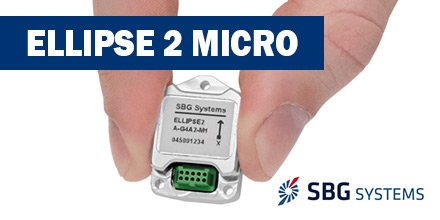
Recently, SBG Systems announced the releases the Ellipse 2 Micro Series. This new product line reduces the size and cost of high performance inertial sensors for volume projects.
“With the Ellipse 2 Micro, integrators benefit from SBG Systems high expertise in motion sensing and positioning in the smallest package,” said Alexis Guinamard, CTO of SBG Systems.
The new Ellipse 2 Micro is available as an IMU for calibrated sensor data, or as an AHRS/INS delivering accurate orientation and navigation using an external GNSS receiver.
High Quality Micro IMU Calibrated from -40° to 85°C
Combining state-of-the-art MEMS-based gyroscopes, accelerometers, and magnetometers, it is establishing new standards in micro MEMS IMU accuracy and reliability.
Following the extensive SBG production process, the Ellipse 2 Micro Series is fully calibrated in temperature. This calibration process eliminates measurement errors such as: sensor bias, gain, linearity, alignment, and g-sensitivity. As such, it provides a constant behavior in all conditions.
Plus, the high-quality Ellipse 2 Micro benefits from a 2-year warranty.
10 years of Filtering Embedded in the 10-gram Ellipse 2 Micro
SBG Systems has been manufacturing inertial sensors for more than 10 years. The company is especially recognized for the added value of the embedded algorithms.
The R&D team continues to adjust motion profiles to platforms (UAV, car, vessels, etc.) and specific conditions (vibrations, high dynamics, low motion, etc.) to reach the highest reliability.
Weighing only 10 grams, the Ellipse 2 Micro benefit from this high expertise. It provides a 0.1° accurate attitude and connects to external GNSS for navigation. It offers a remarkable weight/performance ratio to integrators.
Relying on the Ellipse 2 Micro When You Cannot Rely on GNSS
Ellipse 2 Micro Series provides excellent navigation data when connected to an external GNSS receiver. The cost-effective Ellipse2 Micro INS fuses in real-time inertial and GNSS information to maintain the vehicle position in air, marine, or in land applications.
For automotive projects, the inertial sensor comes with CAN protocol and connects to odometer for an even higher performance in harsh environments (tunnel, urban canyons, etc.).
Smallest Inertial Sensor to Provide Advanced Heave Feature
In addition, the Ellipse 2 Micro is the smallest sensor to provide Heave which automatically adjusts to the wave frequency.
With accurate orientation, navigation, and heave features, Ellipse 2 Micro Series is a remarkable sensor for motion monitoring, wave measurement, stabilization and orientation of onboard equipment (camera, antennas, side-scan echo sounders, etc.).
Ellipse 2 Micro Series Availability
All Ellipse 2 Micro models are now available for order. Product and pricing information is available from
Unmanned Systems Source.
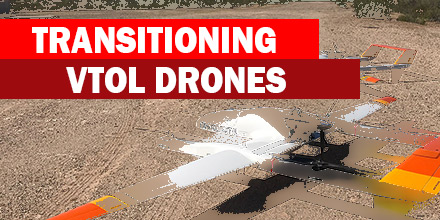 Recently, MicroPilot announced that their autopilot now supports transitioning VTOL drones.
MicroPilot autopilots already fly a wide range of UAVs, including: fixed-wings, multi-rotors, helicopters and even tail sitters.
Now, manufacturers of transitioning UAV drones have the option of a professional autopilot known for its reliability.
Recently, MicroPilot announced that their autopilot now supports transitioning VTOL drones.
MicroPilot autopilots already fly a wide range of UAVs, including: fixed-wings, multi-rotors, helicopters and even tail sitters.
Now, manufacturers of transitioning UAV drones have the option of a professional autopilot known for its reliability.

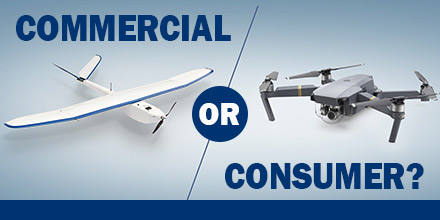 Is there a difference in the accuracy of survey data from a consumer “retail” system versus a commercial system? If so, what is that difference?
Is there a difference in the accuracy of survey data from a consumer “retail” system versus a commercial system? If so, what is that difference? Recently, SBG Systems announced the releases the Ellipse 2 Micro Series. This new product line reduces the size and cost of high performance inertial sensors for volume projects.
“With the Ellipse 2 Micro, integrators benefit from SBG Systems high expertise in motion sensing and positioning in the smallest package,” said Alexis Guinamard, CTO of SBG Systems.
The new Ellipse 2 Micro is available as an IMU for calibrated sensor data, or as an AHRS/INS delivering accurate orientation and navigation using an external GNSS receiver.
Recently, SBG Systems announced the releases the Ellipse 2 Micro Series. This new product line reduces the size and cost of high performance inertial sensors for volume projects.
“With the Ellipse 2 Micro, integrators benefit from SBG Systems high expertise in motion sensing and positioning in the smallest package,” said Alexis Guinamard, CTO of SBG Systems.
The new Ellipse 2 Micro is available as an IMU for calibrated sensor data, or as an AHRS/INS delivering accurate orientation and navigation using an external GNSS receiver.
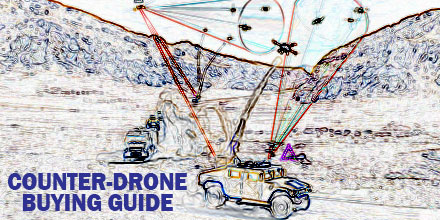 Department of Homeland Security's SAVER program recently identified 13 counter-unmanned aerial systems that could be useful for emergency response.
To accompany this announcement DHS also issued a
Department of Homeland Security's SAVER program recently identified 13 counter-unmanned aerial systems that could be useful for emergency response.
To accompany this announcement DHS also issued a 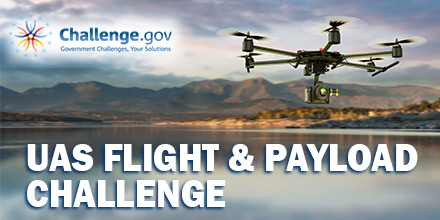 The National Institute of Standards and Technology (NIST) recently issued a Unmanned Aerial Systems (UAS) competition.
The challenge? Design and build a cost-effective drone that carries the biggest payload and stays airborne the longest. The top ten designs in the Unmanned Aerial Systems Flight and Payload Challenge compete for prize awards totaling $432,000.
Hosted by NIST Public Safety Communications Research Program, the challenge consists of three stages. Stage 1, concept paper submission, closes January 29, 2018 at 3pm ET.
In addition, finalists will showcase the UAS with paid travel to the NIST Robotics Lab and the 2018 PSCR Stakeholder conference.
Results from the UAS Flight and Payload Challenge support the public safety community and its stakeholders.
The National Institute of Standards and Technology (NIST) recently issued a Unmanned Aerial Systems (UAS) competition.
The challenge? Design and build a cost-effective drone that carries the biggest payload and stays airborne the longest. The top ten designs in the Unmanned Aerial Systems Flight and Payload Challenge compete for prize awards totaling $432,000.
Hosted by NIST Public Safety Communications Research Program, the challenge consists of three stages. Stage 1, concept paper submission, closes January 29, 2018 at 3pm ET.
In addition, finalists will showcase the UAS with paid travel to the NIST Robotics Lab and the 2018 PSCR Stakeholder conference.
Results from the UAS Flight and Payload Challenge support the public safety community and its stakeholders.
 Recently, Aeromao Inc., delivered an Aeromapper 300 to the University of Brasilia in Brazil. The customized UAV arrived ready to integrate the Nano-Hyperspectral camera from Headwell Photonics.
After initial approval, the team completed the custom integration in just a few weeks.
Recently, Aeromao Inc., delivered an Aeromapper 300 to the University of Brasilia in Brazil. The customized UAV arrived ready to integrate the Nano-Hyperspectral camera from Headwell Photonics.
After initial approval, the team completed the custom integration in just a few weeks.
